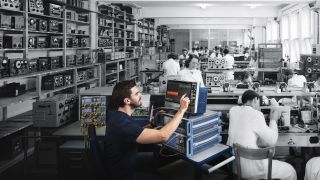Even though 5G networks are expected to undergo further growth and development for years to come, technology strategists are already offering up visions that look far beyond 5G. If their 6G scenarios become reality, we can expect a wonderland of communications in the 2030s. Rohde & Schwarz has been a leading supplier of test and measurement equipment since the start of the digital wireless communications era. Now the technology company is supporting the industry as a close partner to help make the vision of the sixth generation of wireless communications a reality.
As we progress toward smart cities, smart home applications using wireless communications present their own unique requirements. For connected meters and everyday objects, battery life is critical, along with operation and performance. They therefore require a technology that only communicates infrequently and can manage with very little data. IoT test solutions from Rohde & Schwarz make the wireless connectivity of homes and buildings safer and more reliable.
Traffic and transportation are new application areas for wireless communications. Vehicles share streets, traffic lights and other infrastructure facilities with countless road users. Many situations are safety critical, making fast and reliable signal transmission essential. Test and measurement solutions from Rohde & Schwarz put connected cars on the road safely and efficiently.
As we progress toward smart cities, smart home applications using wireless communications present their own unique requirements. For connected meters and everyday objects, battery life is critical, along with operation and performance. They therefore require a technology that only communicates infrequently and can manage with very little data. IoT test solutions from Rohde & Schwarz make the wireless connectivity of homes and buildings safer and more reliable.
Traffic and transportation are new application areas for wireless communications. Vehicles share streets, traffic lights and other infrastructure facilities with countless road users. Many situations are safety critical, making fast and reliable signal transmission essential. Test and measurement solutions from Rohde & Schwarz put connected cars on the road safely and efficiently.
As we progress toward smart cities, smart home applications using wireless communications present their own unique requirements. For connected meters and everyday objects, battery life is critical, along with operation and performance. They therefore require a technology that only communicates infrequently and can manage with very little data. IoT test solutions from Rohde & Schwarz make the wireless connectivity of homes and buildings safer and more reliable.

















